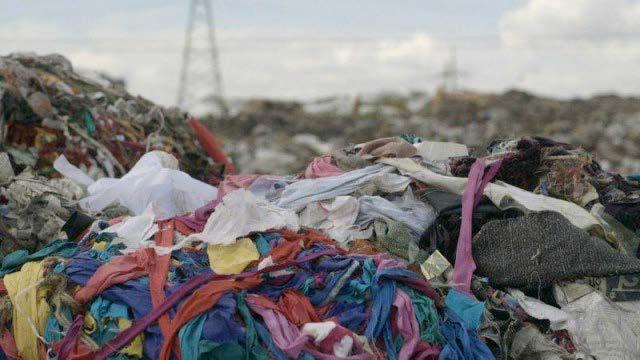
3 minute read
Second-hand fashion
Fashion statement and an act of rebellion
by Amanda Miteniece
Advertisement
Within the current global context, it is hard to ignore the horrific evidence of global warming. I was born into the height of consumer culture and, thus, am fully aware of the consequences created by the hype of mass production of material goods. Mass consumption habits are at the basis of contemporary western society and changing the whole baseline of the system seems to be almost impossible.
After all, shopping has become a leisure activity. However, the choice to become sustainable has gradually entered the mainstream culture. Even more so, it is one of the new fashion trends. Being conscious of what you buy is dictating the current fashion world and at the top of the game is second-hand fashion. Reselling has gained popularity over retail for the first time since the inception of affordable fashion. This is an important step towards reducing the carbon footprint.
We have all probably seen documentaries and videos about fast fashion, where the clothes produced at record speed. It is a multi-layered issue. First, fashion brands use cheap labour in third world countries and exploiting employees by paying way under minimum wage and providing horrendous work conditions. These factories are known as sweatshops as the employees work incredibly long shifts while earning less than half of a living wage amount. There have been numerous accidents due to the bad conditions at factories, and employees have no way how to protect themselves or even speak out about the issues they are facing daily. For example, in 2013, a garment factory in Bangladesh collapsed, and as a result, 1134 workers died, and around 2500 were injured. The building collapsed due to structural failure because the owner of the building did not want to repair the damages. The consequences were fatal. Thus, the price of fast fashion is measured in human life, which is not visible on the price tags.
However, fast fashion is not only an issue within third world countries. Because factories produce clothes fast and cheap, it means that the same effect applies to the generated waste. The largest fast-fashion company in the world “Zara” started a trend of producing new clothes within the season. Previously there were four fashion collections within the year, one for each season. Fast-fashion brands introduce new collection at least twice each month, thus promoting the idea that you need to keep up with the trends consistently. What was in fashion last month is no longer in style today, therefore not serving a purpose and ending up in landfills.
The price of fast fashion may seem cheap on the tag to an individual; however, on a large scale, the cost of it results in permanent damage to the planet. However, we know that consumers do not need to shop for clothes every month. Statistically, only 20% of the clothes that are in your closet will be worn before donating or throwing away. Even if you decide to donate the clothes you no longer want, in reality, almost half of it will end up in landfills anyway. However, there are ways to avoid this wasteful throwaway culture. There are two directions the average consumer can choose to take. A more costly option is eco-fashion. Within the last few years, high-end fashion designers have listened to the demands of activists and concerned consumers and adapted the production process to minimise the carbon footprint. However, I want to focus on second-hand fashion as it is an affordable choice.
Thrift stores
I still remember the days when thrift stores were a place where you would not want to be seen. However, somewhere along the way, the attitude changed. With the help of social media, thrifting became a fashionable choice. We no longer take our fashion tips from magazines. There is a big community of second-hand fashion influencers that provide styling and shopping tips. Either you call it vintage or reused, it still serves the purpose of recycling materials that would pollute the earth. Giving a second life to a garment item challenges fast fashion brands. It is a slow process, however, a necessary one. Because if no consumers were buying the product, fast fashion brands would stop producing. The individual choice of recycling clothes can bring immense development in order to reverse the damage that is created by fast fashion. The change of perception is the key component, as human beings look towards societal norms. Thus, conscious decisions should become more important than mindless consumption. Because it is not yet fully accepted in society, it is necessary to rebel against fast fashion in order to glorify second-hand clothing as a fashionable and as well as an informed choice.

© https://bust.com/images/articles/33833/10930190_815022475239839_378678267783155562_n.jpg










